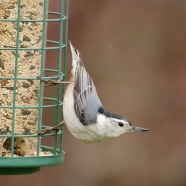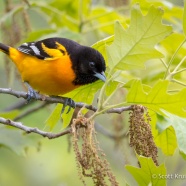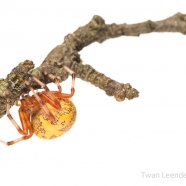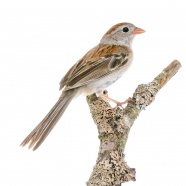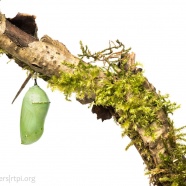National Bird Feeding Month
February 2nd is Groundhog’s Day – that time of year when those of us living in temperate climates turn our attention to a furry brown marmot awaiting its “prediction” as to whether or not winter weather will persist for another six weeks. But did you know that February is also National Wild Bird Feeding Month? Putting up a bird feeder in your backyard can be an entertaining and educational way to pass the time while winter persists, and it will help keep our feathered friends fed until their spring food resources emerge. Want to know what the most common feeder birds are and how to attract...
Read MoreBaltimore Oriole
They may be gone from our yards for the winter but I thought that as we near Halloween it was very appropriate to post this male Baltimore Oriole (Icterus galbula). I enjoyed watching it feeding in an oak tree this past spring on a cool, cloudy and windy day. Do you ever have any luck getting them to come down to eye level at your feeders? I certainly do not, and this bird hopping down to the lower branches of the tree for a minute was a real treat. I hear them every day all summer long but rarely get the chance to see a glow like this one up close. RTPI’s work around the world helps...
Read MoreOctober Orbweavers
It’s ‘Meet Your Neighbours Monday’! With the arrival of autumn, you are likely to notice a distinctive suite of spiders around your home. The species shown here is the Marbled Orb Weaver (Araneus marmoreus). The appearance of spiders like this one during the month of October has earned their group the nickname “Halloween spider”. Orb Weavers come in several different colors and patterns, so you might say that they wear a variety of costumes! Marbled orbweaver (Araneus marmoreus) photographed by Twan Leenders.
Read MoreField Sparrow
Chautauqua County certainly has an abundance of old farm fields, but we should be hearing more Field Sparrows (Spizella pusilla), and other grassland birds, singing in the fields and other open areas across our region. The prairie habitat that once covered our landscape is long gone, but old, overgrown fields and hay fields provide a decent substitute for grassland birds. Even though their substitute habitat provides most of what these animals need, management practices can be challenges for them. Timing the mowing of these fields is important to protect nesting birds, and cutting in early...
Read MoreMonarch chrysalis
To whom does this stunning, sea-green chrysalis belong? Why, to the lovely “Danaus plexippus” of course! Before the monarch caterpillar inside initiated it’s metamorphic transformation, it would have fattened up on milkweed leaves in preparation for the process. Once it emerges, the adult butterfly has a long journey to Mexico ahead. Quite a remarkable life cycle; It’s no wonder that a young Roger Tory Peterson was fascinated with our local Lepidopterans!
Read More



